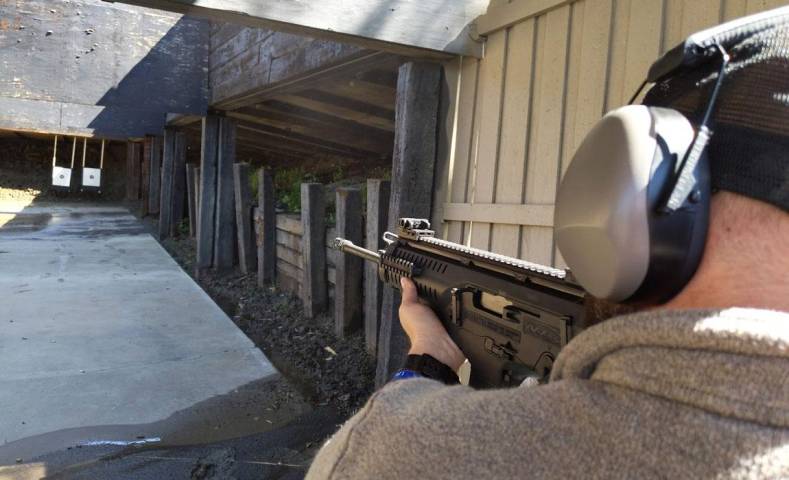Whether you're planning a guys night at the range or considering your first firearm purchase, understanding modification laws protects you from serious legal trouble. Owning a firearm brings responsibilities, and the answer to "Can I modify my gun?" depends on what changes you want to make and where you live.
- Avoid ATF violations that carry 10-year federal prison sentences and permanent criminal records
- Legally enhance your firearm's performance, accuracy, and appearance without breaking regulations
- Navigate confusing federal and state laws confidently when talking with gun store employees or fellow enthusiasts
- Make informed decisions about modifications that add value versus those that create legal liability
- Protect your investment in firearms and accessories through compliant upgrades and improvements {/tab}
- Federal Law Sets The Foundation
- Understanding Handguns vs Long Guns
- A Quick Look At Legal and Illegal Gun Modifications
- Legal Modifications You Can Make
- Prohibited Modifications That Create Felonies
- State And Local Variations
- Serial Number And Identification Requirements
- Professional Installation Recommendations
- Staying Current With Changing Regulations
- Making Smart Modification Decisions
Federal Law Sets The Foundation
The 1934 National Firearms Act (NFA) establishes the basic framework for firearm modifications nationwide. This law emerged after Prohibition-era violence and defines which modifications require federal approval, registration, and tax payments. The ATF (Bureau of Alcohol, Tobacco, Firearms and Explosives) enforces these regulations with serious consequences for violations.
Federal law distinguishes between cosmetic changes and functional modifications that alter the operation of a firearm. Most appearance-related changes remain legal, while modifications affecting barrel length, firing rate, or overall weapon classification often require federal approval or are prohibited entirely.
Understanding Handguns vs Long Guns
Modification rules differ significantly between handguns, rifles, and shotguns. The NFA focuses primarily on "short-barreled rifles" (barrels under 16 inches) and "short-barreled shotguns" (barrels under 18 inches or overall length under 26 inches).
Adding vertical grips to handguns creates particular complications. According to current ATF interpretations, installing a second vertical grip on a pistol reclassifies it as an "Any Other Weapon" (AOW), requiring federal registration and a $200 tax stamp. This seemingly minor modification transforms a legal handgun into a regulated NFA item.
A Quick Look At Legal and Illegal Gun Modifications
As mentioned above, these guidelines generally only apply to guns that are covered under the NFA and those are limited to firearms designed to be used with two hands. However, before modifying a handgun you should confirm that your concept will not get you in trouble.
| Category | Modification | Description | Legal Considerations |
|---|---|---|---|
| Legal Gun Modifications | Cosmetics and Ergonomics | Altering the look and feel of the firearm with new sights or grips. | Generally legal; designed to personalize the firearm to the owner's preferences. |
| Caliber Conversion | Changing the barrel or converting the chamber to accept a different caliber for improved performance. | May be a DIY job or require a gunsmith, depending on the firearm. Legal, but check specific regulations. | |
| Accurizing | Making adjustments to improve firearm accuracy, such as installing an improved trigger kit or recrowning the barrel. | Legal; involves enhancing the firearm's performance. Some modifications might require NFA approval and a fee (e.g., adding a suppressor). | |
| Illegal Gun Modifications | Shortening Shotguns | Reducing a shotgun's barrel to under 18 inches or its overall length to under 26 inches. | Illegal federally and likely to be illegal in all states. |
| Shortening Rifles | Cutting a rifle barrel under 16 inches or its overall length under 26 inches. | Illegal federally and likely to be illegal in all states. | |
| Converting Semi-Automatic to Automatic | Converting a semi-automatic rifle to a fully automatic firearm. | Illegal under federal law, and likely to be illegal under state laws. | |
| Installing Bump Stocks | Installing devices that increase the firing rate of semi-automatic guns by using the gun's recoil to fire more rapidly. | Illegal under federal law as of the most recent updates; many states also ban or restrict these modifications. |
Please note: Gun laws vary significantly by location, and while a modification may be legal at the federal level, it could be illegal in certain states or localities. Always confirm the legality of any modification in your specific location before proceeding.
Legal Modifications You Can Make
Most cosmetic and ergonomic improvements remain perfectly legal across all states. You can change your firearm's appearance through custom paint schemes, engraving, or applying camouflage patterns without legal concerns. These modifications often come up during weekend conversations with buddies who share similar interests.
Sight Upgrades: Installing improved iron sights, red dot optics, or scopes enhances accuracy and remains legal everywhere. Many new gun owners start with sight improvements as their first modification.
Grip Enhancements: Changing grips, adding texture, or installing ergonomic improvements helps customize fit and feel. These modifications improve control during range sessions or hunting trips.
Trigger Improvements: Upgrading trigger components for better feel or reduced pull weight stays within legal bounds, though some competitive triggers require careful installation. Legal alternatives like binary trigger systems can increase firing rates while remaining compliant with federal regulations.
Barrel Modifications: Recrowning barrels for improved accuracy or changing calibers through barrel replacement generally remains legal, though some states impose restrictions on certain calibers.
Prohibited Modifications That Create Felonies
Several modifications carry severe federal penalties regardless of your state's laws. These restrictions have expanded in recent years, making compliance more complex for gun owners.
Barrel Length Restrictions: Cutting rifle barrels below 16 inches or shotgun barrels below 18 inches without proper ATF approval creates felony violations. The overall weapon length must also exceed 26 inches for rifles and shotguns.
Automatic Conversion: Converting semi-automatic firearms to full-automatic operation violates federal law with extremely rare exceptions for properly licensed manufacturers and dealers. This includes installing auto-sears, lightning links, or similar devices.
Bump Stock Prohibition: Since 2019, federal law prohibits bump stocks and similar devices that increase firing rates through recoil energy. Possession, installation, or transfer of these devices carries federal penalties.
Silencer Installation: Adding suppressors or silencers requires federal registration, background checks, and $200 tax stamps. Installation without proper approval constitutes a federal felony, though many states now allow legal ownership of properly registered suppressors.
State And Local Variations
State laws add complexity beyond federal requirements. Some states prohibit modifications that remain federally legal, while others impose additional restrictions on certain firearm types or accessories.
California, New York, and Connecticut maintain particularly restrictive laws covering assault weapon features, magazine capacity, and specific modifications. Massachusetts requires compliance with their assault weapon regulations that affect numerous modification options.
Conversely, states like Texas, Arizona, and Wyoming generally follow federal minimums without additional state restrictions. However, local ordinances may still apply within specific cities or counties.
Before modifying any firearm, research your specific state and local laws. Gun stores, local law enforcement agencies, or firearms attorneys can provide current information about restrictions in your area.
Serial Number And Identification Requirements
Federal law strictly prohibits removing, altering, or obscuring serial numbers on any firearm. This applies to both factory-installed and engraved numbers. Serial number violations carry separate federal penalties independent of other modification charges.
When making cosmetic changes, ensure serial numbers remain clearly visible and unaltered. Some finishes or treatments might inadvertently affect number visibility, creating unintended legal problems. Additionally, federal law prohibits making working firearms look like toys, regardless of the modification's intent.
Professional Installation Recommendations
Complex modifications benefit from professional gunsmith installation, especially when dealing with trigger work, barrel changes, or timing adjustments. Professional installation reduces liability risks and ensures proper function.
Many modifications affect firearm safety or reliability when performed incorrectly. During married life or dad life, firearm safety becomes even more critical with family responsibilities. Professional work provides documentation and warranty coverage that DIY modifications cannot offer.
Staying Current With Changing Regulations
ATF interpretations and federal regulations change periodically, sometimes affecting previously legal modifications. The agency issues opinion letters, guidance documents, and regulatory updates that can impact modification legality.
Subscribe to firearms industry publications, join reputable gun organizations, or consult with knowledgeable dealers to stay informed about regulatory changes. Online forums and social media groups often discuss current interpretations, though verify information through official sources.
Making Smart Modification Decisions
Before modifying any firearm, consider your intended use, local laws, and long-term plans such as for sport vs home defense. Modifications that seem appealing during single life might become impractical or problematic as circumstances change.
Document all modifications with receipts, photos, and installation records. This documentation proves compliance and protects you if questions arise during transfers, inheritance, or legal proceedings.
Choose modifications that enhance function or appearance without creating legal complications. Focus on proven upgrades that add genuine value rather than trendy accessories that might face future restrictions.
Firearm modification involves navigating complex federal and state regulations that carry serious penalties for violations. While many cosmetic and ergonomic improvements remain legal, functional changes often require careful legal analysis. When in doubt, consult qualified professionals before proceeding with any modification. Your responsible approach to firearm ownership sets a positive example and protects your future opportunities for legal gun ownership and enjoyment.
Hey James Hills wants you to share this!

